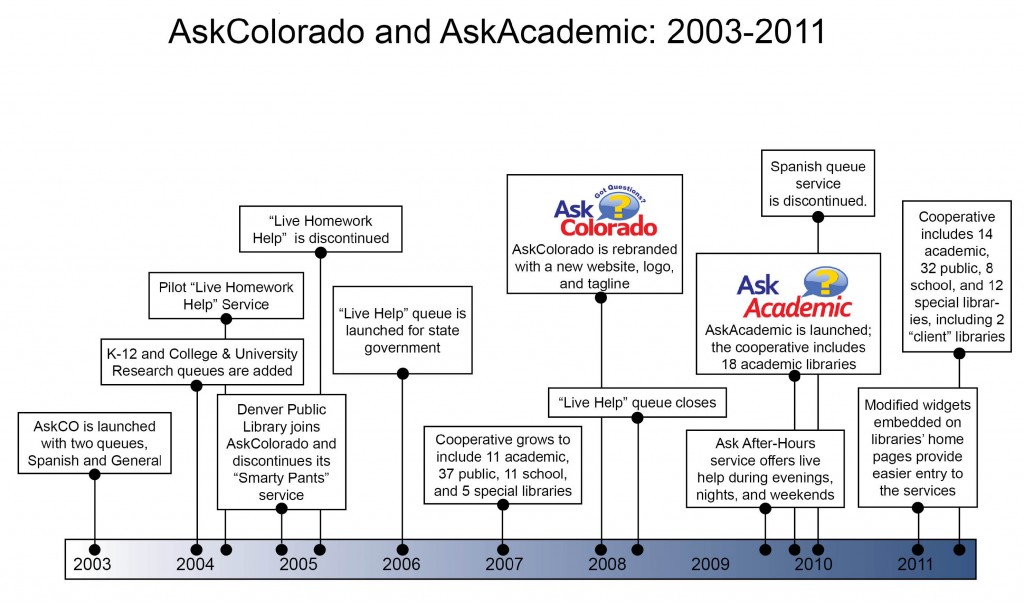AskColorado (www.askcolorado.org), a statewide virtual reference service, was launched on September 2, 2003. Colorado libraries joined the cooperative as members to provide 24/7 chat reference service to Coloradans (see Figure 1 for a timeline of the service). Early iterations of the service included queues for K-12 students, general audiences, academic patrons, and Spanish speakers. Over time, the cooperative weeded-out non-essential (and/or low use) services and honed in on three essential and high-use entry-points for patrons: K-12, General, and Academic. These entry points remain today. In 2008 the cooperative’s academic libraries voted to accept academic members from outside the state of Colorado; and in 2010, the academic queue was re-branded as AskAcademic and a separate website was launched (www.askacademic.org). Though AskColorado as a whole was previously evaluated by the Library Research Service (LRS) in 2004, 2005, 2006, and 2008, 2011 marks the first year LRS has evaluated AskAcademic as a separate entry point.
From April 4 to October 31, 2011, a pop-up survey administered by the Library Research Service (LRS) was presented to library patrons using the AskColorado and AskAcademic virtual reference services (the survey instruments are in Appendices A and B). The purpose of the survey was to gauge patron satisfaction and outcomes. Demographic questions, tailored to the specific survey populations (e.g., county of residence for AskColorado users, institutional affiliation for AskAcademic users, etc.), were also asked. During the survey administration period, more than 15,000 library patrons used the services, 13,299 via AskColorado and 1,833 via AskAcademic. Of those, 1,091 AskColorado users (8%) and 206 AskAcademic users (11%) completed the surveys. In addition to responding to the close-ended questions, 405 AskColorado users and 68 AskAcademic users provided open-ended text comments on their perceptions of the quality and helpfulness of the services (see Appendices C and D).
This report analyzes the results of the two surveys separately to account for differences between the services and their respective survey instruments. Changes to the services over time (see Figure 1), as well as to the survey questions and administration procedures, prevent longitudinal analysis; however, general comparisons of data gathered from 2004 to the present are discussed in this report.
